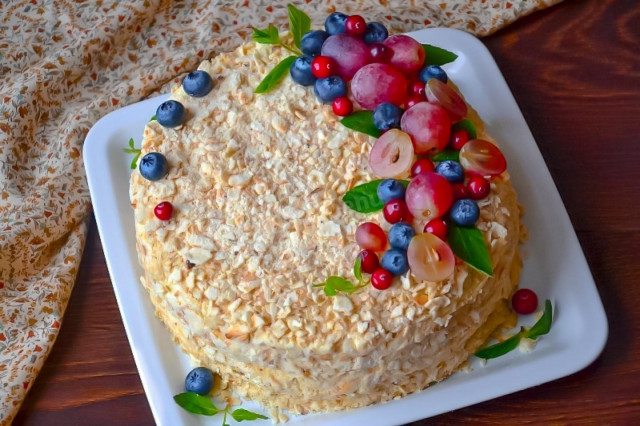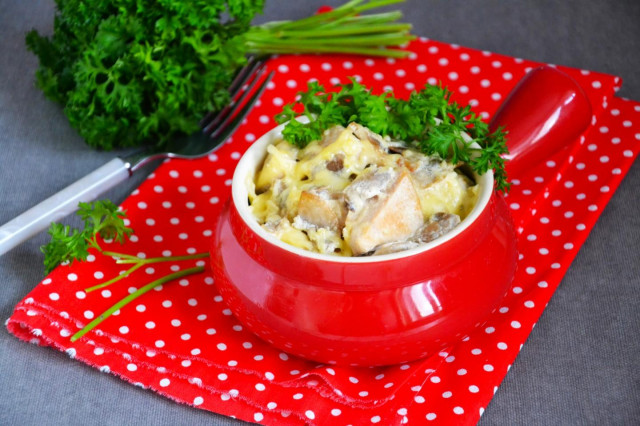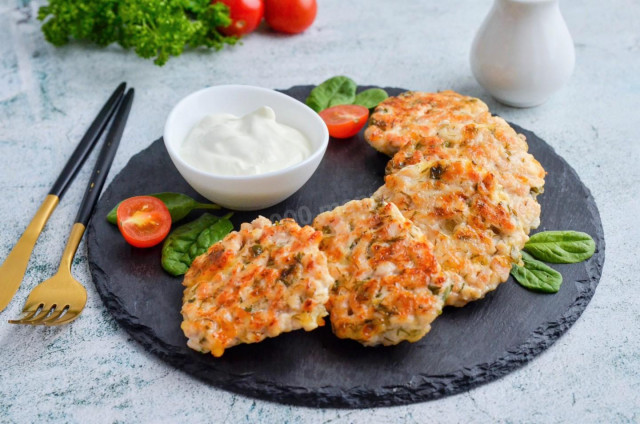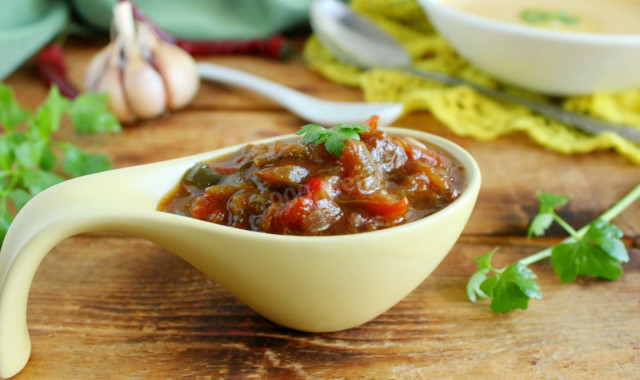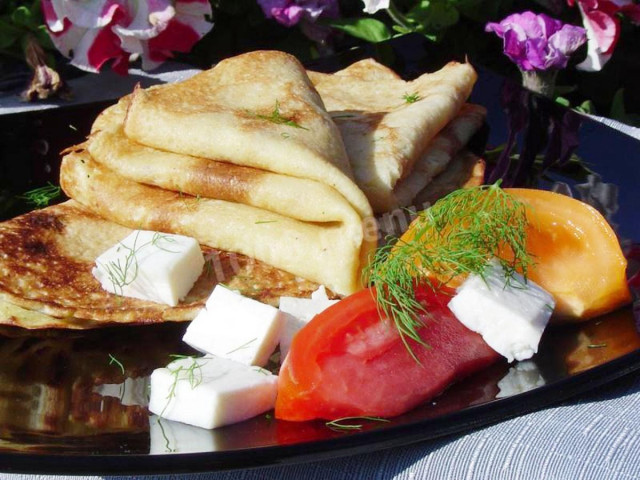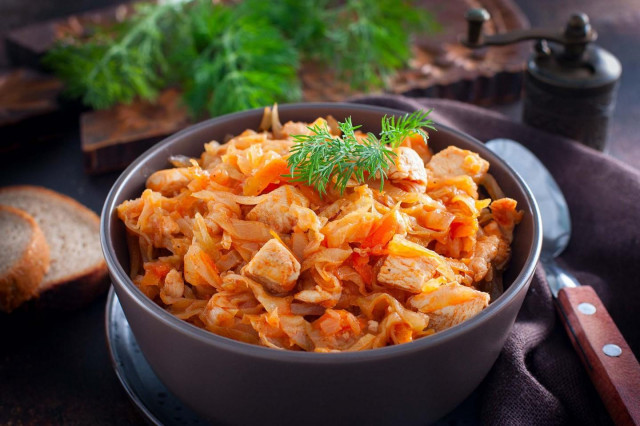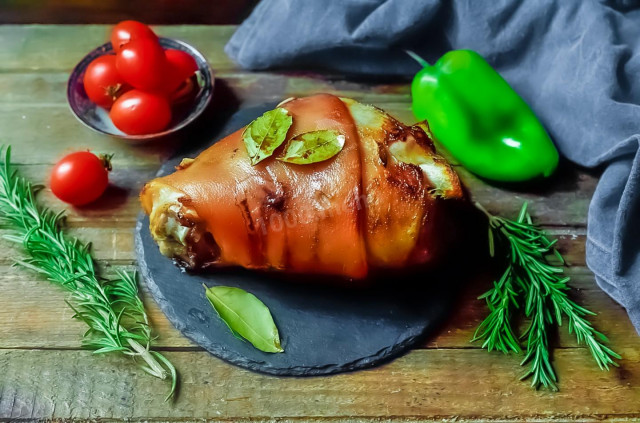Composition / ingredients
Step-by-step cooking
Step 1:
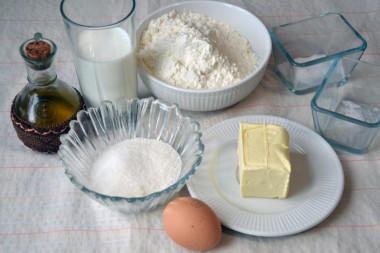
How to bake a Napoleon cake in a frying pan? Prepare the ingredients for the dough. Take the flour of the highest grade. The fat content of milk affects only the final caloric content, you can take any. Egg - large or medium. Oil - room temperature, softened. Take the soda extinguished.
Step 2:
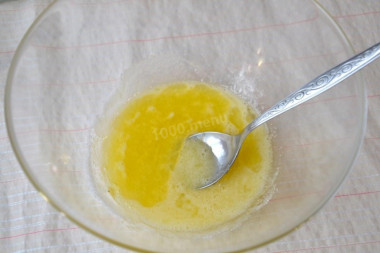
In a clean bowl, rub the egg with sugar with a spoon or fork.
Step 3:
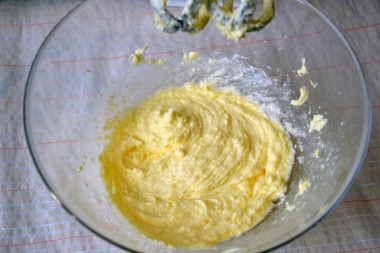
Add vegetable and soft butter, mix.
Step 4:
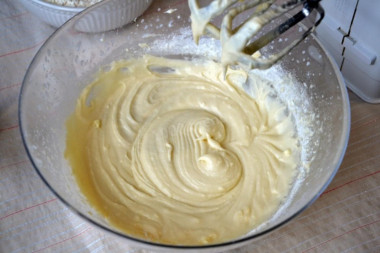
Pour in the milk, add salt, mix. Then quickly stir in the soda slaked with vinegar. Add flour in small portions, stirring the mass so that no lumps appear.
Step 5:
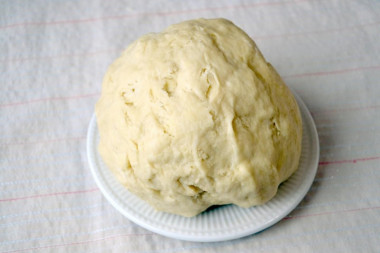
Now you need to knead the dough with your hands. Look at the dough itself and, if necessary, add more flour. We should have an elastic, non-sticky dough, moderately cool (but not too much!), holding its shape well.
Step 6:
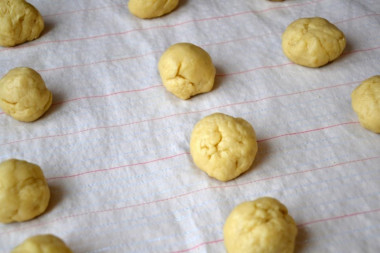
Divide the dough into 18-22 parts depending on the diameter of your frying pan (I have a diameter of 20 cm).
Step 7:
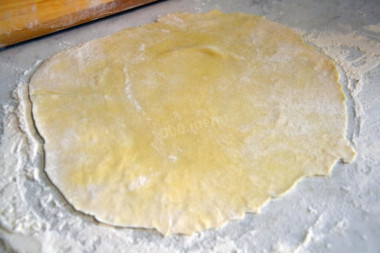
Sprinkle the table well with flour, the rolling pin too. From each part of the dough, roll out a thin cake according to the size of the pan.
Step 8:
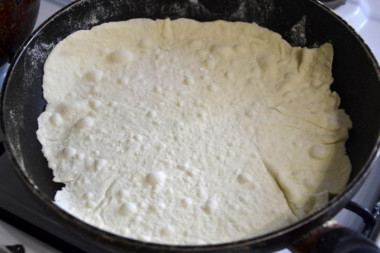
Carefully wrap the cake on a rolling pin and transfer it to a dry hot frying pan. Fry the cake on both sides. It will take quite a bit of time. You can lift the edge of the cake and check how it is baked. The cakes should be very thin and dry well in a frying pan. Right up to a slight crunch and scorching. Then they are not rubber. And the cream absorbs well.
Step 9:
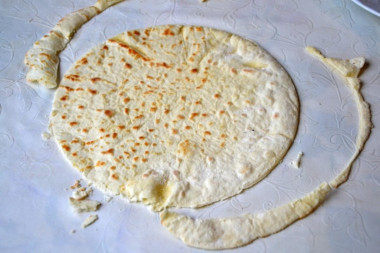
While the cake is still warm, you can quickly trim the edges of it so that you get a beautiful, perfectly smooth circle. We'll use the trimmings later for crumbs.
Step 10:
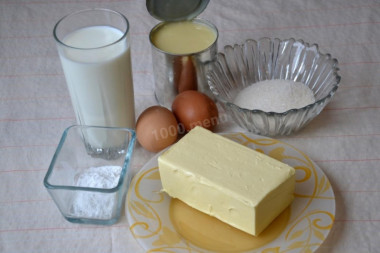
Prepare the products for the cream. Attention! This custard is WITHOUT FLOUR. If you are not sure that you can do this or are used to making custard with flour, then prepare the cream according to your usual recipe. The butter should be soft, at room temperature, so that it is better whipped.
Step 11:
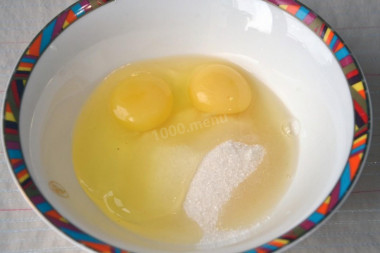
Mash eggs with sugar and vanilla sugar in a separate bowl.
Step 12:
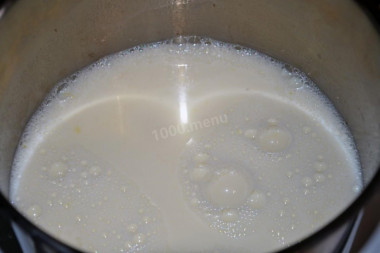
Put a saucepan with a thick bottom on the stove, pour in the milk and heat over low heat. Usually the milk is brought to a boil, but not everyone knows how to pour it into the eggs afterwards so that there are no flakes. Therefore, if you are not a professional who can cook custard at least at night with your eyes closed, then it is better not to bring the milk to a boil. It will be enough just to wait until steam comes from it. That is, the milk will be hot, but not boiling water.
Step 13:
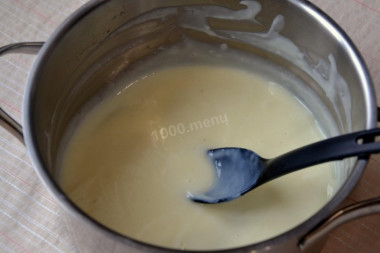
Pour the warmed milk into the egg mixture in a thin, thin trickle and very slowly with constant rapid stirring with a whisk. If you hurry, the eggs will curdle and the cream will go in flakes (even with flour, even without). Ideally, you need to stir the eggs with a whisk as fast as you can, but pour the milk very slowly. Pour the mixture back into the pan and boil the cream over low heat, stirring constantly (!) until it thickens.
Step 14:
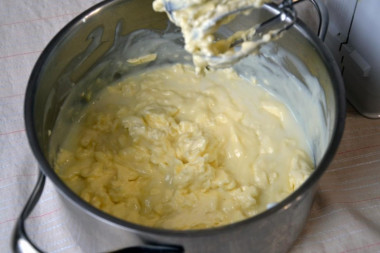
Turn off the stove, remove the pan from the heat and leave the cream to cool. So that the cream does not get wet, cover it with cling film "in contact ". Cool the cream to room temperature or even lower. If the cream is warm inside, it will melt the butter and the mass will greatly liquefy. Add soft butter at room temperature to the cooled cream.
Step 15:
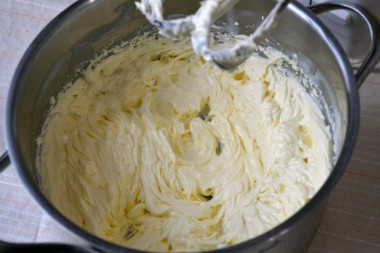
Beat the mass well with a mixer. It should become lush and double in size.
Step 16:
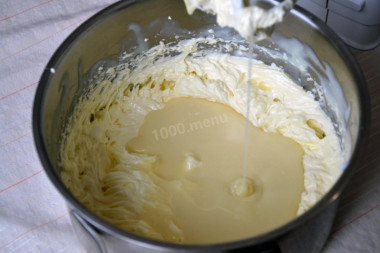
Add condensed milk and vanilla to the cream and whisk again until smooth. It is better not to add condensed milk all at once, because depending on the thickness of the cream, it may need less. Therefore, carefully monitor the consistency. Carefully, do not interrupt the cream, otherwise it will exfoliate. As soon as the mass becomes homogeneous, turn off the mixer.
Step 17:
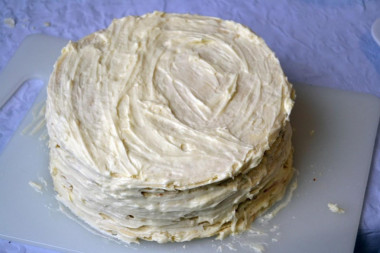
On a wide flat cake dish, begin to spread the cakes on top of each other, smearing each of them with cream. !!! The cakes should cool well both inside and outside. Check this, otherwise the warm cakes will melt the butter in the cream and your cream will liquefy, exfoliate and flow right during assembly.
Step 18:
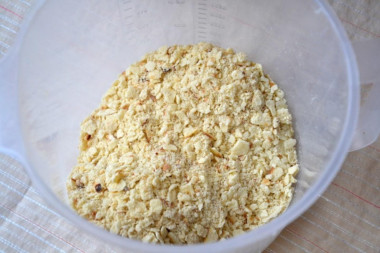
Trim the cakes, chop and sprinkle this crumbs on the top and sides of the cake. Leave the cake in the room for 2-3 hours so that the cakes are soaked with cream, then put it in the refrigerator overnight. Before serving, you can decorate the cake with mint, berries, fruits. I sprinkled powdered sugar on top of it.
I made this cake for the second time in my life. For the first time I did it in the oven and took about 3 hours, despite the fact that I baked only 8 cakes. Immediately, the whole process took me 2.5 hours, and the cakes turned out to be 22. The test recipe is very successful! The cakes are thin (the table shines through them), do not tear, elastic. They are easily dealt with in a frying pan. Because now there is something to compare - I will hardly ever do "Napoleon" in the oven.
The Council:
for this cake, you can use not only the custard offered in the recipe, which is complicated in execution, but also choose any suitable one
Napoleon cream
, as well as sour cream or simply boiled condensed milk (choose according to your taste).
See that the condensed milk is of high quality. It should not be liquid and fluid. If you come across such condensed milk, it's a fake. Good quality real condensed milk is usually Rogachevskaya.
Be prepared for the fact that flour may need more or less than indicated in the recipe. Focus not on the amount of flour, but on the desired consistency of the dough. To avoid mistakes, read about flour and its properties!
Calorie content of products possible in the composition of the dish
- Whole cow's milk - 68 kcal/100g
- Milk 3.5% fat content - 64 kcal/100g
- Milk 3.2% fat content - 60 kcal/100g
- Milk 1.5% fat content - 47 kcal/100g
- Concentrated milk 7.5% fat content - 140 kcal/100g
- Milk 2.5% fat content - 54 kcal/100g
- Chicken egg - 157 kcal/100g
- Egg white - 45 kcal/100g
- Egg powder - 542 kcal/100g
- Egg yolk - 352 kcal/100g
- Ostrich egg - 118 kcal/100g
- Whole durum wheat flour fortified - 333 kcal/100g
- Whole durum wheat flour, universal - 364 kcal/100g
- Flour krupchatka - 348 kcal/100g
- Flour - 325 kcal/100g
- Granulated sugar - 398 kcal/100g
- Sugar - 398 kcal/100g
- Condensed milk with sugar - 324 kcal/100g
- Butter 82% - 734 kcal/100g
- Amateur unsalted butter - 709 kcal/100g
- Unsalted peasant butter - 661 kcal/100g
- Peasant salted butter - 652 kcal/100g
- Melted butter - 869 kcal/100g
- Vegetable oil - 873 kcal/100g
- Salt - 0 kcal/100g
- Baking soda - 0 kcal/100g
- Vanilla sugar - 379 kcal/100g

